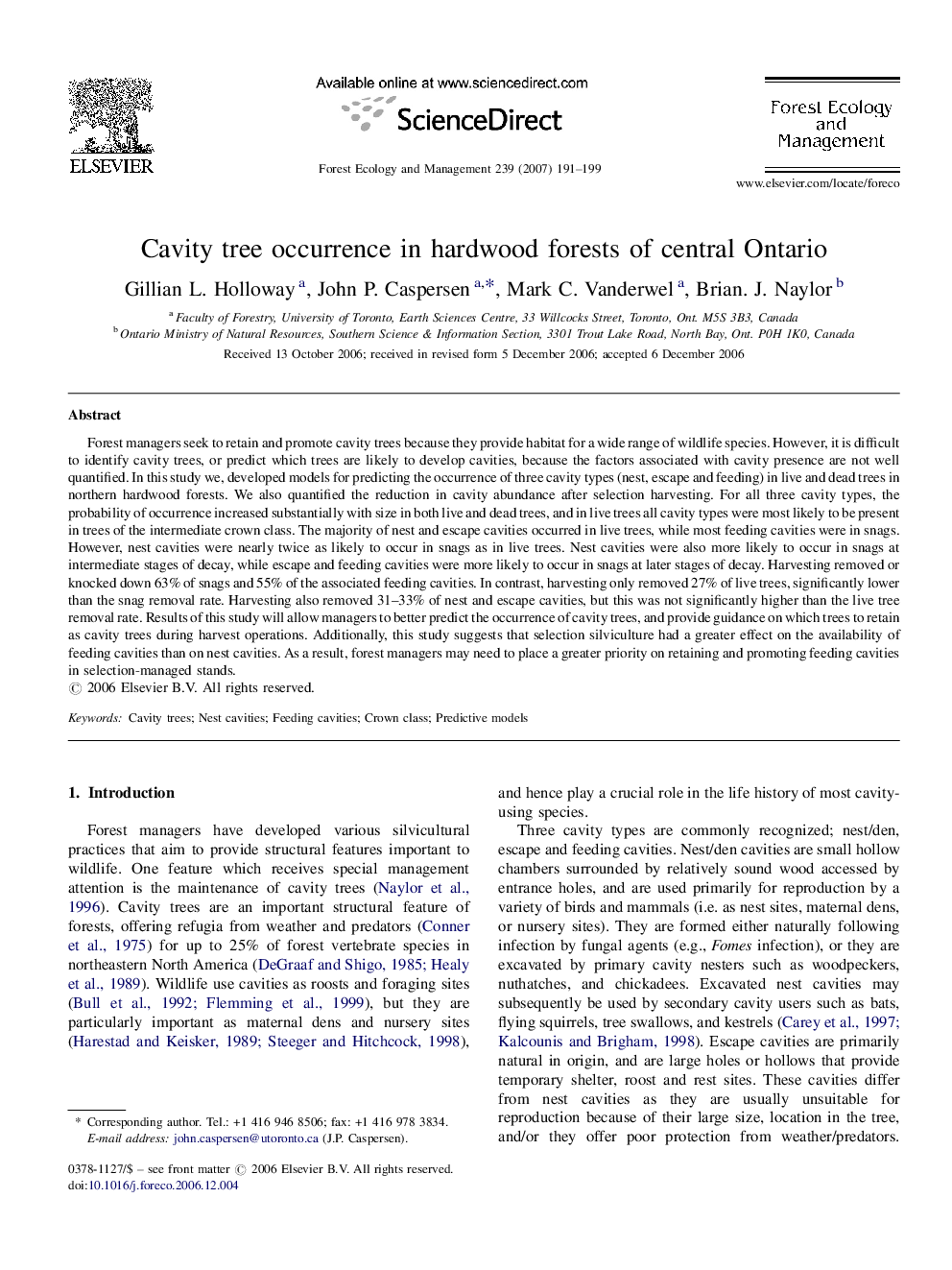| Article ID | Journal | Published Year | Pages | File Type |
|---|---|---|---|---|
| 89809 | Forest Ecology and Management | 2007 | 9 Pages |
Forest managers seek to retain and promote cavity trees because they provide habitat for a wide range of wildlife species. However, it is difficult to identify cavity trees, or predict which trees are likely to develop cavities, because the factors associated with cavity presence are not well quantified. In this study we, developed models for predicting the occurrence of three cavity types (nest, escape and feeding) in live and dead trees in northern hardwood forests. We also quantified the reduction in cavity abundance after selection harvesting. For all three cavity types, the probability of occurrence increased substantially with size in both live and dead trees, and in live trees all cavity types were most likely to be present in trees of the intermediate crown class. The majority of nest and escape cavities occurred in live trees, while most feeding cavities were in snags. However, nest cavities were nearly twice as likely to occur in snags as in live trees. Nest cavities were also more likely to occur in snags at intermediate stages of decay, while escape and feeding cavities were more likely to occur in snags at later stages of decay. Harvesting removed or knocked down 63% of snags and 55% of the associated feeding cavities. In contrast, harvesting only removed 27% of live trees, significantly lower than the snag removal rate. Harvesting also removed 31–33% of nest and escape cavities, but this was not significantly higher than the live tree removal rate. Results of this study will allow managers to better predict the occurrence of cavity trees, and provide guidance on which trees to retain as cavity trees during harvest operations. Additionally, this study suggests that selection silviculture had a greater effect on the availability of feeding cavities than on nest cavities. As a result, forest managers may need to place a greater priority on retaining and promoting feeding cavities in selection-managed stands.
